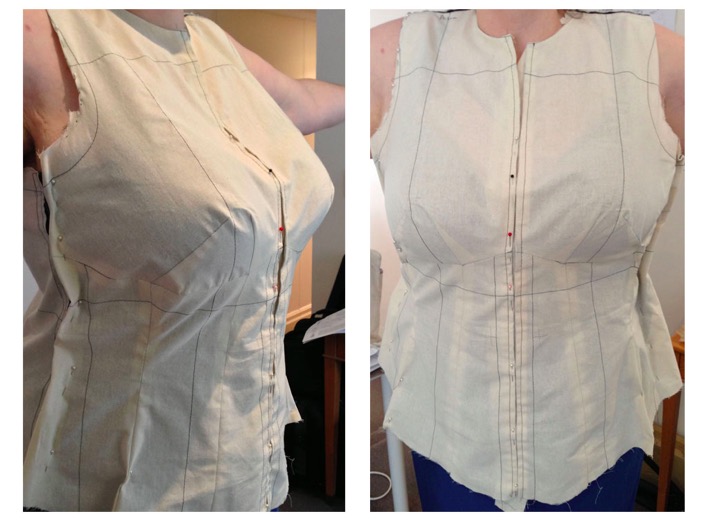Fittings are Hard!!!
Fitting, on the other hand, presents a lot of challenges!

The first challenge is to find a ‘fitting buddy’ who is prepared to work with you, slowly and carefully, to fit the garment to your body. This person needs to be very thorough and patient. I think it is important that you, and your fitter, have the same level of attention to detail. I’m so grateful that my dear husband, Reece, is happy to do this for me - and that he is as fussy as I am.
The second challenge is to find the time. Fitting is NOT something that you can do in five minutes. In my experience, a thorough fitting takes almost an hour for each individual garment. You have to carefully assess each individual element from the top down (i.e., Neckline, Shoulder Line, Back, Top Bodice etc). It is possible that the time required may reduce as we get more experienced but, at the moment, that is how long it is taking.
The third challenge is to have to deal with seeing yourself wearing something that may not be very flattering. Prior to being fitted most garments don’t make you look your best. And, it’s made out of calico which is not a great colour and is fairly stiff. The only consolation is that, if you can get the garment to look good in calico - without collars, sleeves or waistbands - then you are sure to get a good result when it is made up in your fashion fabric.
Despite these challenges however, one thing that I am sure of is that the process of making muslin and, then carefully fitting that muslin, is well worth it. It provides you with the opportunity to ‘drape’ the fabric around the body (but with the advantage of being able to use the pattern designer’s ideas as your starting point). It also gives you the chance to check that you are happy with how the garment looks on you - before you commit both expensive fashion fabric and your precious time in putting the garment together. Skipping this critical stage is like starting to write an essay without having planned it out. It results in a less than stellar end product.
I have learned three very valuable lesson regarding fittings over the past month:
- It is ABSOLUTELY vital that you take the time to pin and pinch everything as accurately as you can. Don’t feel as though you can just ‘get the general idea’ and then sort that out when it comes to working with the pattern. We did this early on and it meant that the second muslin was usually way too tight. Taking the time to pin accurately will reduce the risk of you making ‘guesses’ as you alter the pattern which are typically wrong and give you the distinct sense that you are going backwards.
- Once you have a beautifully pinned, and fitted muslin, you need to decide whether you are confident to translate those changes directly to the pattern. Sometimes, it is a good idea to take the time to make the changes to the existing muslin and then put it on again to check that you are happy with those changes BEFORE you apply those changes to the pattern. Lynda Maynard recommends doing this but I have to admit that I haven’t always done that - and that might have contributed to some of the failed second muslins that I’ve had.
- Once you have made the changes to the pattern then you need to decide whether it is worth taking the time to make a whole new muslin. This is a cost-benefit analysis that will depend on the individual pattern and your time constraints. This is where I think a ‘wearable muslin’ (which is made from cheaper fashion fabric) might be a good idea.